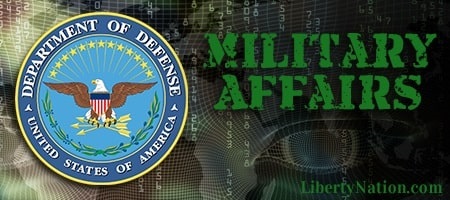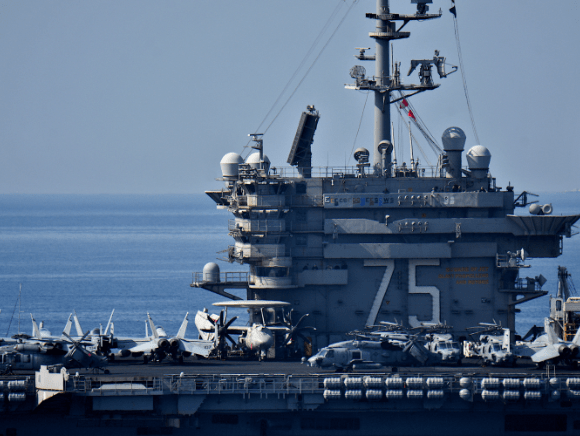How did the US Navy leadership find itself navigating such troubled waters? First, there is a raging kerfuffle between America’s sea service and the Department of Defense (DOD) leadership over how many naval vessels America needs. One of the reasons for the lack of clarity is Navy command recently deciding to align US naval strategy with the 2022 National Defense Strategy (NDS) priorities. Typically, this is done when the NDS is crafted in coordination with the other services to address the threat.
Managing a military department like the Navy is not trivial under the best circumstances. Nonetheless, the Navy has had a rough patch over the last several years. Collisions by the destroyers USS John S. McCain (DDG 56) and USS Fitzgerald (DDG 62) with much larger commercial vessels and the collision of the Seawolf-class nuclear fast attack submarine USS Connecticut with an underwater mountain in the South China Sea do not build confidence in the operational capability of Navy. Recently, America saw the fiasco of finger-pointing by US Navy leadership following the fire that destroyed the USS Bonhomme Richard while it was in port in San Diego for repairs.
Is US Navy Leadership Prepared to Confront China?
Results of a study released a year ago went so far as to question the operational capability of the Navy to successfully confront the People’s Republic of China (PRC) – America’s number one military and economic threat. “The findings of this report are very concerning. Our sailors are too often deprived of the training and leadership they need to fight and win at sea,” a report sponsor, Sen. Tom Cotton (R-AR) said. The Navy does not appear to be taking steps to recover confidence in its decision-making.
Institutional troubles have now been brought into the light of public discourse. No more emblematic of US Navy leadership issues is its inability to nail down the number and category of ships it needs. The problem, as Politico explained, goes something like this:
“The Navy of the future needs 316 ships. Actually, make that 327. No, more like 367. You know what? Let’s make it 373, or maybe even 500. At different points this year, the Pentagon and Navy leaders have floated all five numbers as the desired size of the Navy, the result of a high-stakes — and still raging — internal battle among top Navy, Marine Corps and Pentagon leaders.”
Not mincing words, John Ferrari, a nonresident senior fellow at the American Enterprise Institute, told Politico, “The Navy is broken. Shipbuilding is broken…We’ve gone 30 years without an actual national consensus on Navy shipbuilding.”
 One such issue from inside the Pentagon is the dispute between the Secretary of the Navy, Carlos Del Toro, selected by President Biden for his position, and the Marine Corps Commandant General David Berger on one side wanting to keep the number of amphibious ships at 31. On the other side of the dispute, Deputy Secretary of Defense Kathleen Hicks, former defense deputy policy leader in the Obama administration, wants to reduce the number of large-deck amphibious warships, despite a growing Chinese Navy. Remember, winning there requires getting there. Large-deck amphibs are one way US Marines get to the fight.
One such issue from inside the Pentagon is the dispute between the Secretary of the Navy, Carlos Del Toro, selected by President Biden for his position, and the Marine Corps Commandant General David Berger on one side wanting to keep the number of amphibious ships at 31. On the other side of the dispute, Deputy Secretary of Defense Kathleen Hicks, former defense deputy policy leader in the Obama administration, wants to reduce the number of large-deck amphibious warships, despite a growing Chinese Navy. Remember, winning there requires getting there. Large-deck amphibs are one way US Marines get to the fight.
Tying Capability to the Threat
The size of any combat capability should be tied directly to the military threat. The Department of Defense should think about force sizing by first determining the threat character and magnitude, second by developing an NDS that describes what the threat demands in terms of a requirement, and, third, deciding what capability will address the requirement. For example, the numbers one and three NDS priorities are “Defending the homeland, paced to the growing multi-domain threat posed by the PRC” and “Deterring aggression while being prepared to prevail in conflict when necessary, prioritizing the PRC challenge in the Indo-Pacific, then the Russia challenge in Europe.” These NDS priorities have consistently identified China as a threat across the last two administrations.
Now Chief of Naval Operations, Admiral Mike Gilday, believes making the Navy’s strategy look like the NDS is necessary, but for the wrong reason. “The chief of naval operations has updated his strategic vision for the US Navy to tie it more directly to the Pentagon’s National Defense Strategy, in the hopes of making it more likely to be funded and implemented,” Defense News reports. During the congressional and Defense Department budgeting and funding process, this is called budget-driven capability development, not threat-based. Ultimately, this thinking leaves the Defense Department with indefensible positions attempting to advocate for national security capability. The US Navy’s fleet size should be based on the threat.
The views expressed are those of the author and not of any other affiliation.




